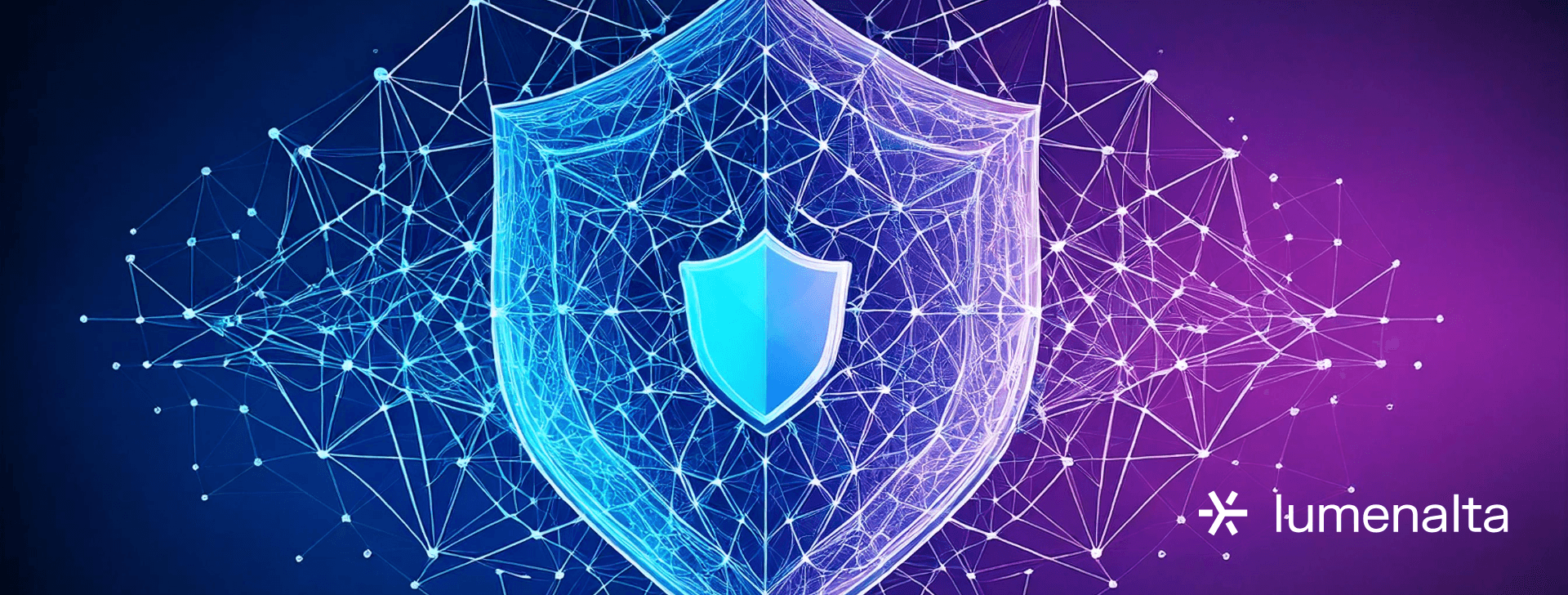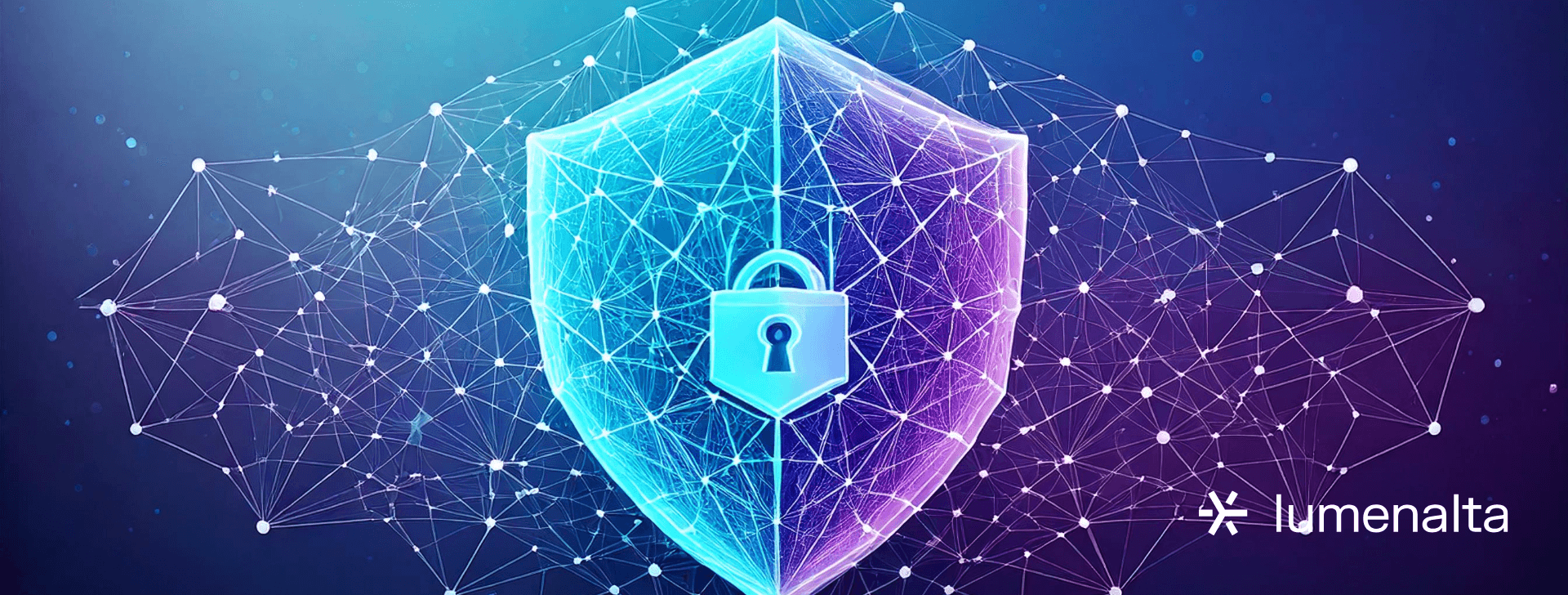

8 data loss prevention tools in 2025
FEB. 23, 2025
5 Min Read
Data loss can disrupt business operations, compromise customer trust, and lead to financial and legal consequences.
Cyber threats, insider risks, and accidental data exposure put sensitive information at risk, making strong security measures essential. Organizations must protect intellectual property, financial records, and confidential data with advanced security tools that detect, monitor, and prevent unauthorized access. A robust approach to data protection includes selecting the right data loss prevention (DLP) tools. These solutions secure data across cloud applications, endpoints, and networks, helping organizations meet compliance requirements while reducing security risks. Strong DLP strategies safeguard critical information and support long-term operational stability and business continuity.
Key takeaways
- 1. Data loss prevention tools protect sensitive data from unauthorized access, insider risks, and accidental exposure across cloud and on-premise environments.
- 2. Effective DLP solutions apply security policies, encrypt confidential files, and track data movement to prevent breaches and compliance violations.
- 3. Organizations need scalable security tools that integrate with existing IT infrastructure, securing data across endpoints, networks, and cloud applications.
- 4. Compliance support is a critical feature of DLP tools, helping businesses meet regulatory standards while avoiding financial penalties.
- 5. Selecting the right DLP tool strengthens security, improves operational efficiency, and minimizes long-term risks associated with data breaches.
What is data loss prevention?

Protecting sensitive data is critical as organizations handle vast financial records, intellectual property, and customer information. Unauthorized access, accidental sharing, and cyber threats put this data at risk, leading to financial losses, regulatory penalties, and reputational damage. Strong security measures are necessary to mitigate these threats, making data loss prevention an essential part of a company’s risk management strategy.
DLP is a combination of security tools and policies to prevent confidential information from being lost, misused, or exposed. These solutions monitor data across endpoints, networks, and cloud applications, blocking unauthorized transfers and encrypting sensitive files to reduce the likelihood of breaches. Security teams use DLP tools to track data movement, detect suspicious activity, and apply policies that restrict access based on user roles and permissions. Organizations also use DLP to comply with GDPR, HIPAA, and PCI DSS regulations, avoiding costly fines and legal consequences.
The effectiveness of DLP depends on a company’s ability to implement the right tools and security policies while balancing operational efficiency. Protecting sensitive data without disrupting business processes requires a cohesive approach that aligns with regulatory requirements and internal security objectives. A strong DLP strategy minimizes risk, protects business continuity, and strengthens trust with customers and stakeholders.
"Without the right protections in place, organizations risk financial losses, reputational damage, and regulatory penalties due to unauthorized data access, accidental exposure, or cyber threats."
Key features of effective DLP tools

Protecting sensitive data requires security measures that prevent unauthorized access, accidental exposure, and cyber threats. Data loss prevention tools provide organizations with the ability to track data movement, enforce security policies, and reduce compliance risks. A strong DLP strategy helps safeguard financial information, intellectual property, and personal data while minimizing the risk of financial penalties and reputational damage. The most effective tools include features designed to detect threats, restrict unauthorized sharing, and control confidential information.
- Content inspection and classification: Examines file contents to identify sensitive information such as credit card numbers, intellectual property, or personally identifiable details. It uses predefined rules and machine learning to classify data based on its level of confidentiality.
- Data discovery and risk assessment: Locates sensitive files across endpoints, networks, and cloud storage to help security teams assess potential risks. Strengthens security by identifying unprotected data and applying protective measures based on confidentiality requirements.
- Access controls and security enforcement: Limits access to confidential information based on user roles, departments, and security policies. Restricts unauthorized actions such as copying, downloading, or sharing sensitive data across unsecured channels.
- Endpoint protection and activity monitoring: Tracks how data is used on company-owned devices, including laptops, desktops, and mobile phones. Blocks unauthorized file transfers, restricts risky applications, and enforces encryption to prevent data leaks.
- Network security and traffic analysis: Monitors data movement across internal and external networks to detect unusual activity. Blocks unauthorized file transmissions through email, cloud services, and collaboration platforms.
- Cloud data security and compliance monitoring: Extends security measures to cloud applications, collaboration tools, and online storage. Prevents data leaks by tracking user behavior in cloud environments and applying encryption where necessary.
- Incident response and reporting: Generates real-time alerts and detailed reports on security incidents, allowing security teams to investigate threats and take corrective action. Provides insights that help refine security policies and improve compliance with data protection regulations.
A strong DLP tool integrates these features to reduce exposure risks, strengthen security policies, and support compliance efforts. Organizations prioritizing data protection gain better control over sensitive information, mitigate financial risks, and create a more secure operational framework supporting long-term growth.
8 data loss prevention tools in 2025

Protecting sensitive data requires security tools that prevent unauthorized access, accidental leaks, and regulatory violations. Cyber threats and insider risks continue to rise, making strong data protection strategies essential for business continuity and compliance. Organizations must deploy solutions that monitor data movement, apply security policies, and block unauthorized sharing across networks, endpoints, and cloud applications. The right data loss prevention tool strengthens these efforts, helping organizations safeguard intellectual property, customer information, and financial records. Selecting an effective DLP solution involves evaluating security capabilities, scalability, and integration with existing IT infrastructure.
1. Microsoft Purview
Microsoft Purview offers an integrated DLP solution that secures sensitive data across Microsoft 365 applications, including SharePoint, OneDrive, and Teams. Organizations gain real-time monitoring, automatic data classification, and policy enforcement that restricts unauthorized access.
This tool uses machine learning to improve data detection accuracy, reducing manual security efforts. Compliance management features support regulatory requirements such as GDPR and HIPAA. Microsoft Purview provides organizations with a scalable solution for managing security risks while maintaining productivity across cloud and on-premise environments.
2. Google Cloud DLP
Google Cloud DLP protects sensitive data by identifying and securing confidential information across cloud applications and on-premise storage. The tool scans structured and unstructured data, detecting financial records, personal identifiers, and proprietary business information.
Built-in tokenization, redaction, and encryption features help prevent unauthorized exposure while maintaining data usability. The platform automates policy enforcement, ensuring consistent protection across cloud services and corporate networks. Integration with Google Cloud security tools provides a comprehensive approach to data protection for organizations operating in cloud-based environments.
3. Forcepoint DLP
Forcepoint DLP provides organizations with advanced security controls to prevent unauthorized data transfers, detect insider threats, and monitor high-risk activity. This solution applies adaptive security policies that adjust based on user behavior and data sensitivity.
Centralized policy management allows IT teams to enforce security rules across endpoints, networks, and cloud applications. Forcepoint DLP identifies potential data leaks by analyzing behavior patterns, providing greater control over sensitive files. Its ability to track user activity helps organizations detect security risks early and reduce data loss incidents.
4. Digital Guardian
Digital Guardian specializes in endpoint protection, providing real-time monitoring and policy enforcement to prevent unauthorized data access. Security teams gain deep visibility into data movement, helping detect and block suspicious activity before breaches occur.
This solution applies artificial intelligence to classify data based on sensitivity, ensuring consistent protection across devices and networks. Compliance support for PCI DSS, GDPR, and CCPA makes Digital Guardian an effective choice for organizations with strict regulatory requirements. The platform’s ability to secure data across hybrid environments helps businesses manage security risks without disrupting operations.
5. McAfee DLP
McAfee DLP delivers enterprise-grade security features that protect confidential information across networks, endpoints, and cloud applications. Encryption, content inspection, and automated threat detection reduce the risk of unauthorized data access.
Centralized security management allows IT teams to track data movement and apply security policies across multiple environments. McAfee DLP integrates with other security tools within the McAfee ecosystem, strengthening overall data protection efforts. Organizations benefit from proactive security measures that limit exposure to insider threats and cyberattacks.
6. Symantec DLP
Symantec DLP offers a multi-layered approach to data protection, providing security controls that prevent unauthorized data sharing and exposure. Continuous monitoring helps organizations track data movement across cloud services, email, and local storage.
This solution applies machine learning to improve data classification, reducing false positives while increasing accuracy. Security teams gain real-time insights into user activity, helping to identify potential threats before they cause operational disruptions. Symantec DLP provides organizations with scalable security controls that adapt to both on-premise and cloud-based environments.
7. Check Point DLP
Check Point DLP focuses on securing business-critical data by preventing unauthorized file transfers and enforcing strict security policies. The tool applies predefined security rules that help organizations detect and block potential data leaks.
Integration with Check Point’s broader security framework provides enhanced threat detection and response capabilities. The platform’s real-time alerting system notifies security teams of potential incidents, allowing for a rapid response. Built-in encryption features add a layer of protection for sensitive business information.
8. Palo Alto Networks DLP
Palo Alto Networks DLP provides a cloud-native approach to data protection, securing sensitive information across hybrid and multi-cloud environments. AI-powered analytics improve data classification accuracy, reducing manual security tasks while strengthening policy enforcement.
Continuous data monitoring helps security teams identify risks before they escalate. The platform provides real-time visibility into data movement, ensuring that security policies are applied consistently across all endpoints and cloud applications. Compliance support for industry regulations makes Palo Alto Networks DLP a strong choice for organizations looking to reduce security risks while maintaining operational efficiency.
A strong DLP strategy requires selecting tools that align with security priorities, compliance obligations, and business objectives. These eight solutions offer advanced protection against data leaks, cyber threats, and insider risks, helping organizations reduce financial exposure while maintaining control over sensitive information. Strengthening data security mitigates risk and supports long-term business stability and regulatory compliance.
"Selecting an effective DLP solution involves evaluating security capabilities, scalability, and integration with existing IT infrastructure."
Importance of data protection solutions

Sensitive information is a foundation for business operations, making it a primary target for cyber threats, insider risks, and accidental exposure. Intellectual property, customer records, and financial data hold significant value, and failure to protect this information can lead to financial penalties, legal consequences, and operational disruptions. As security threats grow in complexity, organizations must prioritize solutions that safeguard critical assets and maintain regulatory compliance.
A strong data protection strategy combines security policies, encryption technologies, and monitoring tools to secure information across networks, endpoints, and cloud applications. Organizations rely on these measures to track unauthorized access attempts, restrict risky data transfers, and block exposure to external threats.
The expansion of cloud computing, remote work, and third-party integrations increases the risk of unauthorized data access. Without the right security measures, companies face greater exposure to insider threats, phishing attacks, and data breaches that compromise sensitive information. An organized approach to data security provides greater visibility into risks, reduces operational disruptions, and limits long-term financial losses.
Prioritizing data protection supports long-term business stability, strengthens trust with clients and stakeholders, and improves security resilience against emerging threats. Investing in advanced data security solutions protects valuable assets and helps organizations maintain compliance, optimize operational efficiency, and safeguard long-term profitability.
Choosing the best data loss prevention tools

Protecting sensitive information requires selecting a data loss prevention tool that aligns with security priorities, operational requirements, and compliance obligations. Organizations risk financial losses, reputational damage, and regulatory penalties without the right protections due to unauthorized data access, accidental exposure, or cyber threats. A logical approach to choosing a DLP solution helps control sensitive data while minimizing business disruptions.
Evaluating key factors ensures that a DLP tool meets an organization's security and operational needs:
- Scalability and adaptability: Security tools must support business growth while maintaining performance across cloud applications, on-premise systems, and remote work settings. A scalable DLP solution accommodates expanding data volumes and developing security requirements without disrupting productivity.
- Data classification and tracking: Identifying sensitive information is essential for preventing unauthorized access. Automated classification and continuous monitoring help security teams detect risks, apply encryption, and restrict data movement based on security policies.
- Access controls and policy enforcement: Strong security policies prevent unauthorized users from viewing, sharing, or modifying sensitive information. DLP tools should allow organizations to define custom access restrictions, apply automatic encryption, and block high-risk activities.
- Seamless integration with security infrastructure: Compatibility with cloud platforms, endpoint protection solutions, and email security tools strengthens overall data protection efforts. A DLP solution must integrate with existing security frameworks to provide consistent protection across all data environments.
- Incident detection and response: Security teams need real-time alerts, automated remediation workflows, and detailed reporting to mitigate potential threats. A well-equipped DLP tool helps organizations track security events, investigate policy violations, and take corrective action before a data breach occurs.
- Compliance support and regulatory alignment: Organizations operating under strict regulatory frameworks must use DLP solutions that support industry standards. Built-in compliance features help businesses meet data protection regulations while minimizing the risk of legal consequences.
A strong DLP solution provides proactive security measures, enhances operational efficiency, and reduces exposure to cyber threats. Selecting a tool that aligns with business needs strengthens long-term data protection efforts, supports regulatory compliance, and minimizes security risks that could disrupt operations.
Data protection is more than a security measure—it’s a foundation for operational resilience and business growth. Strengthening data security safeguards critical assets, improves compliance, and reduces exposure to security risks. At Lumenalta, we help organizations implement tailored security solutions that align with business objectives, ensuring long-term success. A stronger security strategy starts here.
table-of-contents
- What is data loss prevention (DLP)?
- Key features of effective DLP tools
- 8 data loss prevention tools in 2025
- 1. Microsoft Purview
- 2. Google Cloud DLP
- 3. Forcepoint DLP
- 4. Digital Guardian
- 5. McAfee DLP
- 6. Symantec DLP
- 7. Check Point DLP
- 8. Palo Alto Networks DLP
- Importance of data protection solutions
- Choosing the best data loss prevention tools
- Common questions about data loss prevention tools
Common questions about data loss prevention tools
What are data loss prevention tools, and how do they work?
Why do organizations need data loss prevention tools?
How do DLP tools help with compliance requirements?
What features should a business look for in a DLP solution?
How do cloud-based DLP solutions differ from on-premise options?
Want to learn how data loss prevention can bring more transparency and trust to your operations?







